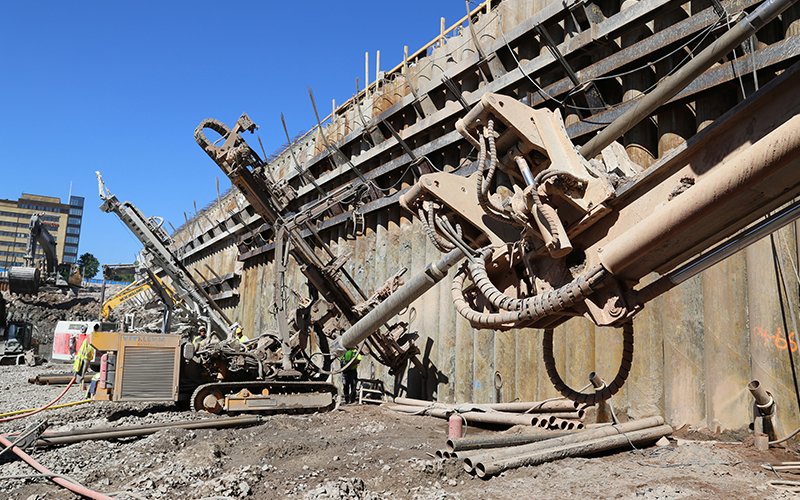Anchoring
Anchoring is a method used in construction, where walls with masses of overburden are anchored to the solid rock using steel casings filled with grouting. This can be used to anchor great masses to the bedrock. Anchoring increases the stability and durability of the construction by transferring both tension and shear forces. These structures are also known as ground anchors or earth anchors, and they come in different forms and sizes that can be used to support buildings or civil engineering and other structures.
To start, casing tubes are driven through the already laid overburden, using special casing systems. Once the casings are in place through the wall, the drilling can proceed with a ground or rock drill bit. After this, the drill will be driven deep enough into the bedrock or the ground beyond the overburden walls; the depth is usually defined by the weight the anchor is supposed to support and the quality of the ground or rock. Finally, to finish the anchoring, a steel cable is inserted to the bottom of the hole and the hole is filled with grouting.
Ground anchors have a wide variety of benefits, which plays into their multiple use cases. They are lightweight and resist corrosion, which makes them suitable for different types of soil. They are easy and quick to install, creating only minimal disturbance on the soil. Earth anchors also have a low environmental impact, while simultaneously being able to achieve a holding capacity of up to 3 000 kN.
The new Robit® DTH Prime DT and DTH-ROX MU systems are perfect for anchoring!
For more Robit drilling consumables, please visit our Products page.
Browse products